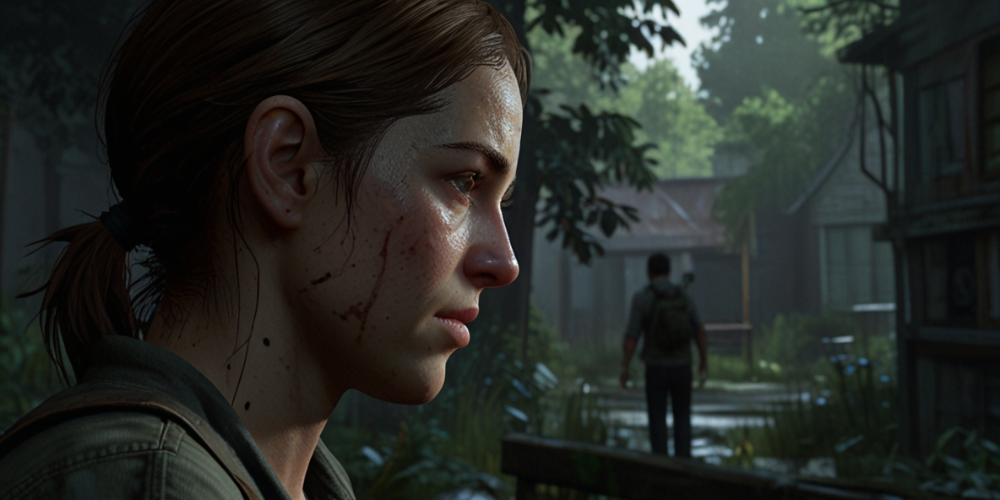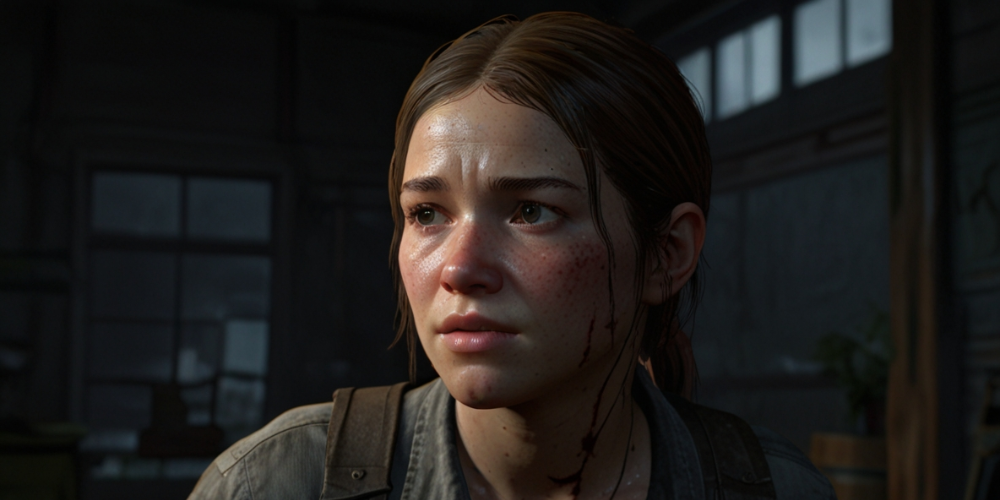The Last of Us Part II: In-Depth Character Analysis and Storyline Exploration

The Last of Us Part II is an action-adventure video game that has gained significant popularity since its inception. Developed with immense creative prowess by Naughty Dog and published by the renowned Sony Interactive Entertainment, this video game has managed to carve a niche for itself in the competitive world of gaming. The distinct element that elevates this game's renown is its remarkable gameplay that enthralls both veteran game enthusiasts and fledgling players in equal measure.
The gaming encounter takes place in a world devastated by a catastrophic event, creating an enthralling canvas for the gameplay. However, it's not just the high-octane action sequences that make this game stand out. The heart of The Last of Us Part II lies in its deep storytelling, which proves to be just as, if not more, gripping as its action.
The depth of the characters in this game is truly commendable. The creators focused on building characters that are both relatable and complex, thereby ensuring the gamers' emotional investment in the plot. Alongside the main characters, the minor characters have also been carefully crafted, resulting in a realistic and immersive gaming experience.
Another important aspect that elevates The Last of Us Part II to a new level is its intricately woven plot. The complexity and layers of the story intrigue gamers, prompting them to delve deeper into the game's universe. It is this combination of deep characters and a well-crafted plot that provides the game its unique brand of strength and appeal.

In this article, we aim to delve further into the game's universe. We will be exploring the game's main characters, their development throughout the story, and the nuanced storyline that keeps the players hooked. By understanding these aspects in more depth, we can appreciate the ingenuity and hard work behind this successful game.
Main Characters and Character Development
The Last of Us Part II centers its narrative largely around two characters, Ellie and Abby. These individuals aren't mere characters in the gaming world, but rather, they are the backbone of this sequel, playing integral roles in driving the game's complex storyline. Their well-crafted persona and emotional depth bring a level of realness to the game that is rare to find, offering players the opportunity to delve deeper into their motives, thoughts, and actions.
Breaking away from the traditional approach of its predecessor, The Last of Us Part II takes a bold step in storytelling by providing a dual perspective in its narrative. This unique spin allows the players to experience the story from both Ellie's and Abby's points of view, lending much-needed depth to the storyline. It also highlights the subjectivity of human perception and experience as the same event unfolds differently in each character's gameplay, hence leaving the players with a broader outlook and understanding of the story.
The characters, Ellie and Abby, undergo elaborate character arcs throughout the game. They evolve tremendously; their growth is evident in their changing ideologies, decisions, and varying responses to the challenges they confront. By focusing on their character development, the game manages to convey the profound impacts of their life experiences and challenges faced in the post-apocalyptic world on their personalities.

Lastly, the game navigates through the complexities of Ellie and Abby's actions and emotions. It unearths the reasons behind their decisions, their conflicting emotions, and their struggle with their past and present. This exploration of complexity drives home the point that the characters aren't merely heroes or villains but complex individuals caught in a world where survival takes precedence over everything else.
Ellie: The Haunted Protagonist
Ellie, a nineteen-year-old survivor, sets out on a journey of retribution when a tragedy befalls her peaceful life in the post-apocalyptic world. Her character undergoes layers of transformation, moving from a carefree teenager to a revenge-driven individual. Her decisions, guided by pain and rage, paint a heart-wrenching picture of human vulnerability and resilience.
Abby: The Conflicted Antagonist
Abby's character challenges conventional villain templates. She evolves from a character initially perceived as ruthless to revealing her humane side shadowed by her past. Abby's quest for redemption, contrasted with her violent actions, incites conflicting emotions among players, thus enriching the narrative.
Secondary Characters: Their Impact and Role

Several secondary characters play crucial roles across the game, aiding and influencing the main characters' journey in profound ways. Key characters include Joel, Dina, and Isaac.
Joel: The Lingering Spirit
While the game starts with Joel's brutal end, his influence persists throughout the narrative. His actions in the prequel lay the groundwork for the events in The Last of Us Part II, leaving Ellie and Abby to suffer the repercussions of his choices.
Dina: Ellie's Anchor
Dina, a key ally and love interest of Ellie, provides solace and helps Ellie retain her humanity. Her character demonstrates the power of love and friendship in extreme circumstances and the consequences of their loss.
Isaac: The Cold Strategist
Isaac, the strategic leader of the Washington Liberation Front, plays an essential role in the war between factions. He illustrates the dehumanizing effects of long-term conflict and the cost of dogmatism.
Plot Analysis: The Multifaceted Storyline
The Last of Us Part II weaves an intricate tale revolving around both its hero and villain, probing profound undertones of existence, vengeance, affection, and atonement.
Survival and Revenge

The gaming narrative portrays the brutal truths of a world that has undergone an apocalypse, wherein the battle for survival is an unending challenge. Revenge emerges as a driving force, coloring the decisions and actions of the main characters while underlining the damaging effects of this dangerous pursuit.
Love and Redemption
Balancing the bleak aspects of the storyline are themes of love and redemption. These themes explore how love can act as a stabilizing influence and how redemption might be possible even in the most despairing circumstances. They add emotional depth and intricacy to the narrative.
Controversial Storytelling and Player Interpretations
The Last of Us Part II has incited polarizing reactions among players due to its unconventional storytelling and character development. Contemporary thematic exploration and unexpected character arcs have led to various interpretations and theories among the fanbase.
Conclusion: Assessing the Narrative Impact
The Last of Us Part II offers a highly immersive experience through compelling characters and a thought-provoking storyline. Its characters challenge traditional boundaries, growing and evolving through personal losses and wins. The multifaceted narrative blends elements of survival, revenge, love, and redemption, invoking strong emotions and prompting players to delve deeper. Despite its polarizing reception, the game ultimately solidifies its standing as a profound exploration of human nature in extreme circumstances.
Latest posts
See more-
![The Last of Us Part II: In-Depth Character Analysis and Storyline Exploration]() Editor’s Choice
2024-08-11
The Last of Us Part II: In-Depth Character Analysis and Storyline Exploration
The Last of Us Part II is an action-adventure video game that has gained significant popularity since its inception. Developed with immense creative prowess by...
Editor’s Choice
2024-08-11
The Last of Us Part II: In-Depth Character Analysis and Storyline Exploration
The Last of Us Part II is an action-adventure video game that has gained significant popularity since its inception. Developed with immense creative prowess by...
-
![CrossCode Developer Announces Alabaster Dawn, Enters Early Access in Late 2025]() News
2024-08-12
CrossCode Developer Announces Alabaster Dawn, Enters Early Access in Late 2025
In 2021, Radical Fish Games initially introduced a new action RPG titled Project Terra. Now, they have officially named it Alabaster Dawn and announced that...
News
2024-08-12
CrossCode Developer Announces Alabaster Dawn, Enters Early Access in Late 2025
In 2021, Radical Fish Games initially introduced a new action RPG titled Project Terra. Now, they have officially named it Alabaster Dawn and announced that...
-
![Alabaster Dawn Planned to Have 30-60 Hours of Playtime, Demo Launching in Early 2025]() News
2024-08-13
Alabaster Dawn Planned to Have 30-60 Hours of Playtime, Demo Launching in Early 2025
Radical Fish Games has made an exciting announcement regarding their upcoming action RPG, Alabaster Dawn, which is set to enter early access in 2025. In...
News
2024-08-13
Alabaster Dawn Planned to Have 30-60 Hours of Playtime, Demo Launching in Early 2025
Radical Fish Games has made an exciting announcement regarding their upcoming action RPG, Alabaster Dawn, which is set to enter early access in 2025. In...
Latest Reviews
See more-
![]() Action
Cult of the Lamb
Action
Cult of the Lamb
-
![]() Action
WILD HEARTS™
Action
WILD HEARTS™
-
![]() Casual
Gacha Club
Casual
Gacha Club
-
![]() Action
Call of Duty®: Warzone™ 2.0
Action
Call of Duty®: Warzone™ 2.0
-
![]() Action
Gacha Cute
Action
Gacha Cute
-
![]() Action
Cuphead - The Delicious Last Course
Action
Cuphead - The Delicious Last Course










